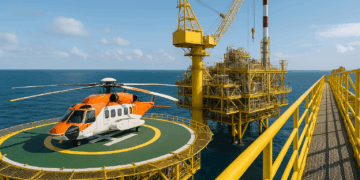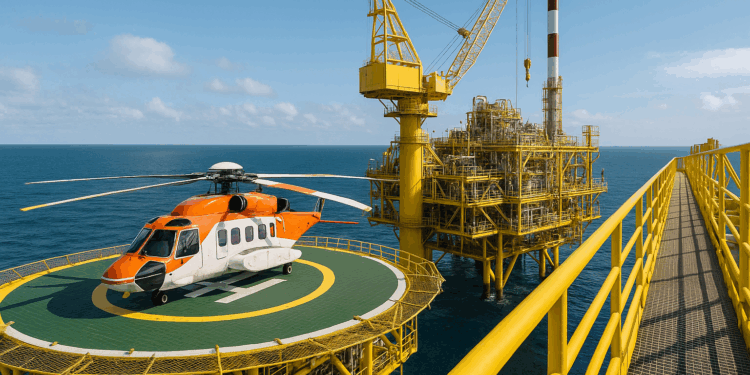Story Highlight
– New weight limit of 19.5 stone for offshore workers.
– 2,227 workers exceed the limit as of 2024.
– Regulation aims to improve emergency evacuation safety.
– Union leaders criticize potential cost-cutting motivations.
– OEUK to provide resources for affected employees’ transition.
Full Story
Plans to implement new weight regulations affecting offshore oil workers in the North Sea are set to take effect on November 1, 2026. The guidelines, established by Offshore Energies UK (OEUK), stipulate that workers exceeding 19.5 stone (124kg), including their work equipment, will be prohibited from offshore duties. This policy is projected to impact approximately 2,227 offshore employees, as recorded in 2024.
The regulation is primarily introduced in response to safety concerns highlighted by the Maritime and Coastguard Agency (MCA), particularly regarding the capacity of Search and Rescue (SAR) winching systems. These systems are designed to lift individuals below the prescribed weight limit, prompting the need for careful consideration of safety measures during emergency situations such as helicopter transfers and evacuations at sea.
Under the new framework, individuals surpassing the 19.5 stone threshold will have their OEUK medical certifications revoked, effectively grounding them from offshore operations. Additionally, workers whose weight falls between 18 and 19.5 stone (115–124kg) will receive restricted certificates, which will only be valid for a limited duration of three or six months.
Graham Skinner, the Health and Safety Manager at OEUK, addressed the rationale behind the implementation of these changes. He stated, “We are committed to ensuring all offshore teams have the information and resources they need to work safely. These new materials, developed in consultation with industry partners and HM Coastguard, underline our focus on creating a robust safety culture across the sector.”
Despite the intentions to enhance safety, the announcement has sparked dissent among union representatives. Critics argue that the regulations may serve as a pretext for reducing workforce numbers under the guise of maintaining safety standards. Ann Joss, the Scottish Organiser for Offshore Workers at the RMT union, expressed her concerns regarding the new weight limitations. She noted that while there are potential safety benefits from improved weight standards—for instance, ensuring that lifeboats and survival equipment remain within certified testing limits—there are apprehensions regarding the application of these rules.
Joss commented, “On one hand, improved weight standards can enhance safety by ensuring lifeboats, helicopters and survival equipment are used within proper testing limits, making emergency responses more predictable and effective. However, there are real concerns about how these rules are being applied and many offshore workers believe this policy is less about safety and more about cost-cutting—a backdoor way to shed skilled staff. RMT will vigorously oppose any moves by any company that hides behind health and safety language to quietly get rid of workers on the cheap.”
To support the transition to these new regulations, OEUK is initiating stakeholder workshops aimed at educating offshore personnel about the changes. Additionally, a variety of resources are being developed, including a workforce video that will be released shortly. Throughout 2026, a transition phase will be established to assist affected employees, offering medical guidance, resources for workforce engagement, and initiatives promoting healthy eating and weight management practices.
As the industry prepares to implement these new regulations, many workers remain alert to the potential implications on their employment and the operational landscape of offshore safety practices. The ongoing dialogue between OEUK and industry stakeholders, including unions, is crucial in ensuring that the changes reflect a balance between safety enhancements and job security for the thousands involved in North Sea oil operations.
The upcoming policy indicates a significant shift in the approach to safety within the offshore sector, raising questions about the balance between operational safety, staffing levels, and the overall working conditions of those in the industry. Stakeholders will be closely monitoring the effects of these new weight regulations as the implementation date approaches.































